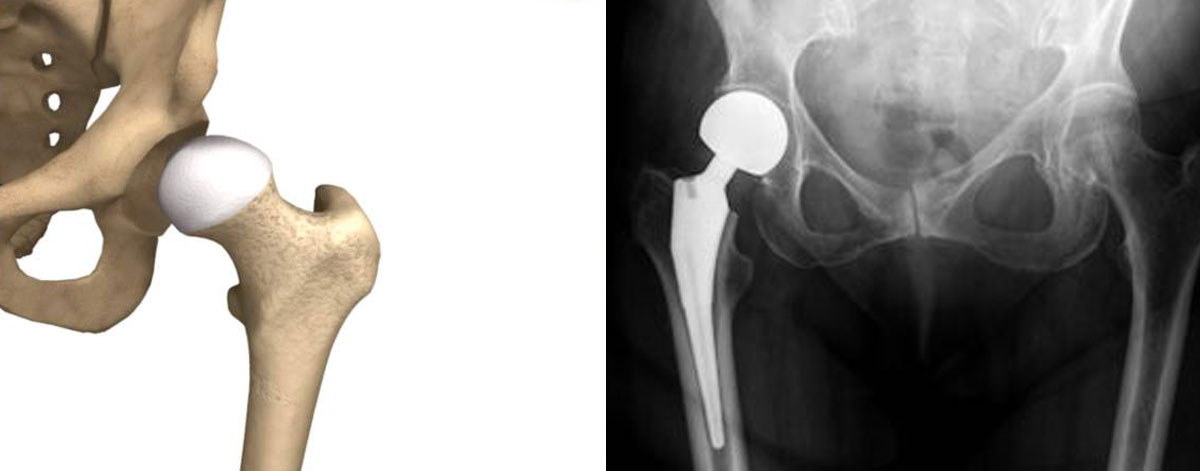Partial Hip Replacement
Partial hip replacement, also known as hip hemiarthroplasty, is a surgical procedure in which only one half (either the femoral head or the acetabulum) of the hip joint is replaced with an artificial prosthesis. This procedure is typically performed when the femoral head (the ball-shaped end of the thigh bone) is damaged or diseased, while the acetabulum (the hip socket) remains healthy and functional.
Partial hip replacement is commonly used in the following situations:
- Hip Fractures: In cases where the femoral neck or head is fractured, especially in elderly individuals with weakened bones, a partial hip replacement may be preferred over total hip replacement.
-
Revision Hip Fractures : Incases of failed hip fracture fixation, partial hip can be considered.
- Some Hip Joint Infections: In certain cases of hip joint infections, removing and replacing the damaged femoral head may be an appropriate treatment option.
The Partial Hip Replacement Procedure:
- Anesthesia: The procedure is usually performed under general anesthesia or regional anesthesia.
- Incision: The surgeon makes an incision over the hip joint to access the femoral head.
- Removal of the Femoral Head: The damaged femoral head is carefully removed from the femur.
- Prosthesis Placement: A metal or ceramic ball component is then inserted into the femur to replace the removed femoral head. The prosthetic femoral head is attached to a stem that is anchored into the femur.
- No Changes to the Acetabulum: Unlike total hip replacement, the acetabulum is not replaced in partial hip replacement since it is assumed to be healthy and functional.
Do's for Partial Hip Replacement
- Follow Pre-operative Instructions: Adhere to your surgeon's pre-operative guidelines, which may include fasting instructions, medication restrictions, and hygiene protocols.
- Prepare Your Home: Make sure your home is safe and accessible for your recovery, with clear pathways and assistive devices like a walker or cane.
- Comply with Medications: Take prescribed medications, including pain relievers and antibiotics, as directed to manage pain and prevent infections.
- Keep the Incision Clean and Dry: Follow your surgeon's instructions on caring for the surgical incision to prevent infections and promote proper healing.
- Control Swelling and Pain: Use ice packs and elevation to control swelling, and take pain medications as prescribed to manage discomfort.
Don'ts for Partial Hip Replacement
- Overexert Yourself: Avoid putting excessive stress on the new hip joint during the early stages of recovery. Follow your physical therapist's guidelines and gradually increase activity as advised.
- Neglect Physical Therapy: Continue with your physical therapy sessions diligently to ensure a successful recovery and improve hip function.
- Ignore Signs of Infection: If you experience signs of infection, such as fever, increased redness, swelling, or drainage from the incision, contact your surgeon immediately.
- Engage in High-Impact Activities: Avoid high-impact exercises or activities that may put excessive strain on the hip joint.
- Sit for Prolonged Periods: Avoid sitting or lying in one position for too long to prevent stiffness and discomfort.

